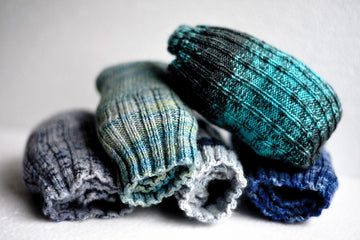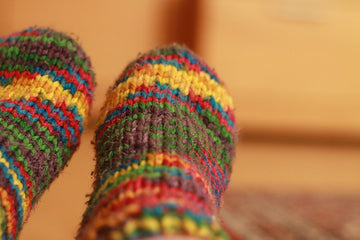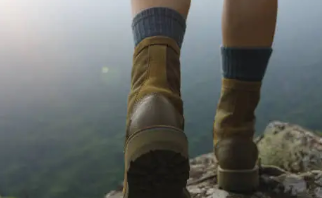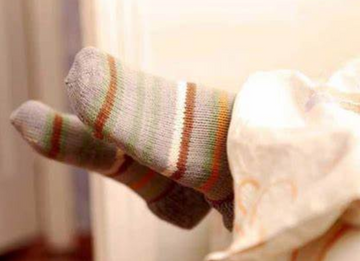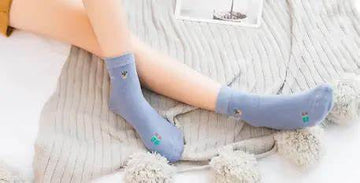
Often overlooked but essential for comfort and hygiene, socks are the unsung heroes of our daily wardrobe. But how long do these trusty companions truly last before needing to be replaced? Fear not, sock enthusiasts! This guide will unveil the secrets to sock longevity, ensuring your feet stay happy and healthy for a long time.
How Long Does Socks Last
Socks, the silent guardians of our feet, are often overlooked but essential for comfort and hygiene. How long do these trusty companions truly last? Fear not, for we're here to crack the code of sock longevity!
Generally, with proper care, socks worn once a week can last between six months to a year. High-quality options can even surpass that! But there's more to the story.
Material Matters
Just like people, socks come in various materials, each with its own lifespan. Cotton, the classic choice, lasts 6 months to a year. High-quality wool socks, boasting a thicker build, can last 1-2 years or more. Synthetic warriors made from polyester, nylon, or spandex offer similar resilience (1-2 years) due to their resistance to wear and tear.
Frequency of Use
Daily wear and tear take their toll. Socks worn and washed frequently naturally succumb faster, typically lasting 6 months to a year. But for dress socks used less often, proper care can extend their lifespan to several years!
TLC Makes a Difference
Proper care is the magic ingredient. Washing them inside-out in cold water and skipping the high-heat dryer works wonders. Storing them neatly, avoiding over-stretching, and keeping them paired all contribute to maintaining their shape and elasticity.
Quality Counts
Think of high-quality socks as superheroes. Made with better materials and construction by reputable brands, they offer a longer lifespan compared to their budget counterparts. These cheaper socks, often thin and poorly made, might only last a few months.
When to Say Goodbye
Regularly checking your socks for signs of retirement is key. Thinning fabric, pesky holes, or a loss of elasticity signal it's time for a new pair. This ensures both comfort and hygiene for your precious feet.
Sock Style and Build
Crew and knee-high socks, with their thicker fabric and stronger construction, tend to outlast no-show counterparts, which are smaller and thinner.
Activity Level
Those who walk or stand a lot, especially on rough surfaces, will wear out their socks faster than folks with a more relaxed lifestyle.
By understanding these factors and following these simple tips, you can transform yourself into a sock whisperer, ensuring your foot friends stay comfortable and supportive for a long time to come!
How to Extend the Lifespan of Your Socks
Socks - the unsung heroes of our daily footwear routine. But let's face it, they don't always last as long as we'd like. Here's the lowdown on extending sock life and keeping your feet comfy for longer.
Fit First
Did you know a good fit is key to sock longevity? Just like Cinderella's slipper, the right size ensures the heel and toe - the most stressed areas - are properly aligned. This minimizes friction and prevents those pesky holes from developing too soon. Check out our Sock Size Guide to find your perfect match!
TLC for Your New Sock Besties
So, you've found the dream sock: comfy, stylish, maybe even with a fun design! Now, how to make them last? Here's the secret: give them some love in the laundry room. Turning socks inside-out before washing helps protect the fibers and colors. And whenever possible, skip the dryer! Air-drying is the gentlest way to go. But if you're short on time, use the lowest heat setting to minimize damage. For more laundering wisdom, visit our Sock Care Guide!
Keeping Your Sock Squad Together
Nobody likes a lonely sock, especially when it means tossing out a perfectly good partner. Here's a simple tip: keep socks together throughout the washing and drying process. Use a laundry mesh bag or clothespins to prevent sock separation and the dreaded single sock situation.
Rotation is Key
Wearing multiple pairs and rotating them helps extend their overall lifespan. Think of it as giving each pair a well-deserved break!
Do Socks Wear Out
Yes, socks do wear out over time. The rate at which they wear out depends on the material they are made from and how they are used.
Material
Natural Fibers: Socks made from natural fibers such as cotton or wool tend to wear out faster. Natural fibers are more prone to wear and tear, and they can also shrink or stretch over time, leading to a shorter lifespan.
Synthetic Materials: Socks made from synthetic materials like polyester or nylon are generally more durable. These materials are more resistant to wear and tear, making them last longer. They also retain their shape better and are less likely to shrink.
Usage
Daily Wear: Socks that are worn daily will naturally wear out more quickly due to constant friction and pressure.
Heavy Activities: Engaging in strenuous activities like running, hiking, or heavy labor can accelerate the wear and tear on socks.
Care and Maintenance
Washing and Drying: Proper washing and drying can extend the life of your socks. Turning socks inside out before washing, using cold water, and air-drying them can help maintain their integrity.
Storage: Proper storage, such as keeping socks paired and avoiding overstretching, can also help prolong their lifespan.
Signs That Socks Are Wearing Out
Thinning Fabric: Noticeable thinning in areas such as the heel and toe indicates that the socks are wearing out.
Holes: Small holes or tears are a clear sign that socks need to be replaced.
Loss of Elasticity: Socks that have lost their stretch and no longer stay up are wearing out.
Discoloration: Fading or significant discoloration can also be an indication of wear.
By paying attention to these signs and considering the material and care of your socks, you can better determine when it’s time to replace them.
How Many Pairs of Socks Should I Own
The number of pairs of socks you should own depends on your lifestyle and activities.
Casual Daily Socks
Recommendation: 7 pairs
Purpose: These are for everyday wear, providing comfort and durability for regular activities.
Athletic Socks
Recommendation: 4 to 10 pairs
Purpose: These are designed for physical activities, offering extra absorbency and breathability. The number can vary based on how often you exercise and whether you need different types for various sports.
Cozy Socks
Recommendation: 2 to 4 pairs
Purpose: These are for lounging or keeping warm during colder months. They prioritize comfort and warmth.
Fashion-Focused or Expressive Socks
Recommendation: 4 to 7 pairs
Purpose: These socks add a stylish or fun element to your wardrobe. They are often used for special occasions or to complement specific outfits.
Additional Considerations
Laundry Frequency: If you do laundry more frequently, you may need fewer pairs. If you prefer doing laundry less often, you might want to have more pairs on hand.
Lifestyle and Activities: Tailor the number of socks to your specific lifestyle. For example, if you have a highly active lifestyle or participate in multiple sports, you might need more athletic socks.
Climate: In colder climates, having extra cozy socks might be beneficial, whereas in warmer climates, breathable athletic socks might be more useful.
By considering these guidelines and adjusting based on your personal needs, you can ensure you have a well-rounded sock collection that meets all your requirements.
Should I Throw Away Old Socks
Instead of throwing away old socks, you can consider these options for repurposing or recycling them.
Donate Gently Used Socks
Second-Hand Stores: Places like Goodwill and Salvation Army often accept gently used socks. They can resell, recycle, or send them abroad.
Local Charities: Check if local shelters or community organizations need sock donations.
Recycle Worn-Out Socks
Label and Bag: If your socks have holes or are heavily worn, label them as such and place them in a separate bag. Some donation centers accept these for recycling purposes.
Textile Recycling Programs: Many cities have textile recycling programs where you can drop off old socks to be repurposed into new materials.
Do Thick Socks Last Longer
Yes, thick socks typically last longer due to their enhanced durability and resistance to wear and tear. The additional material and reinforced areas in thick socks help them withstand friction and pressure better, making them a cost-effective choice for activities that involve significant mileage, such as running. Their longer lifespan means you won't need to replace them as often, offering better value over time.
Final Words
By understanding the factors influencing sock lifespan - material, usage, care, and style - and following our simple tips, you've officially transformed into a sock whisperer. Now you can extend the lifespan of your favorite socks, keeping your feet happy and stylish for years to come. Remember, with proper care and a little knowledge, your socks can become loyal companions on your life's journey.
Read More:
Why Do We Wear Socks
Do You Wear Socks with Climbing Shoes
What Color Socks with Brown Shoes
What Socks to Wear with Loafers
What are Grip Socks
What Socks to Wear with Cowboy Boots




